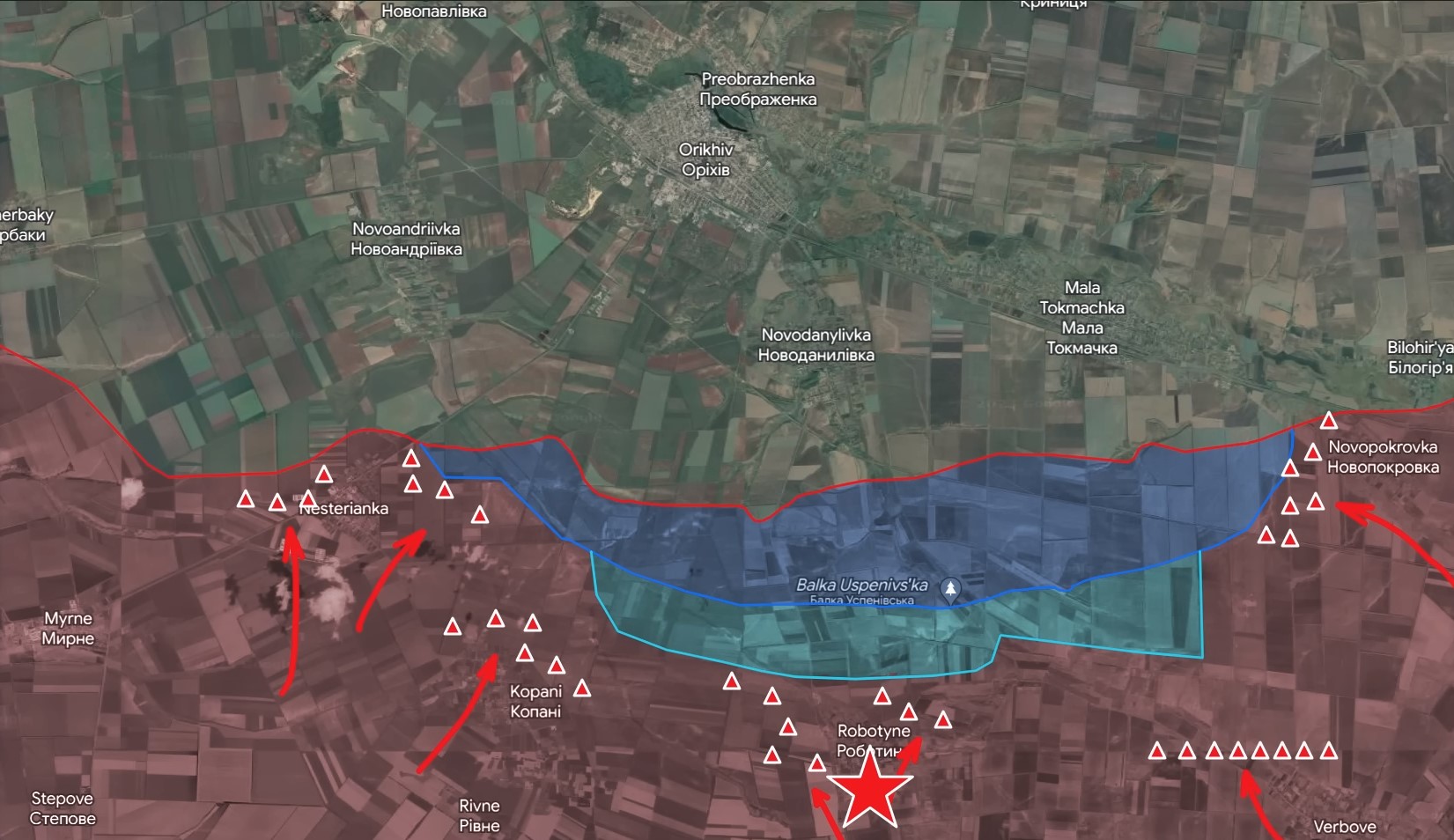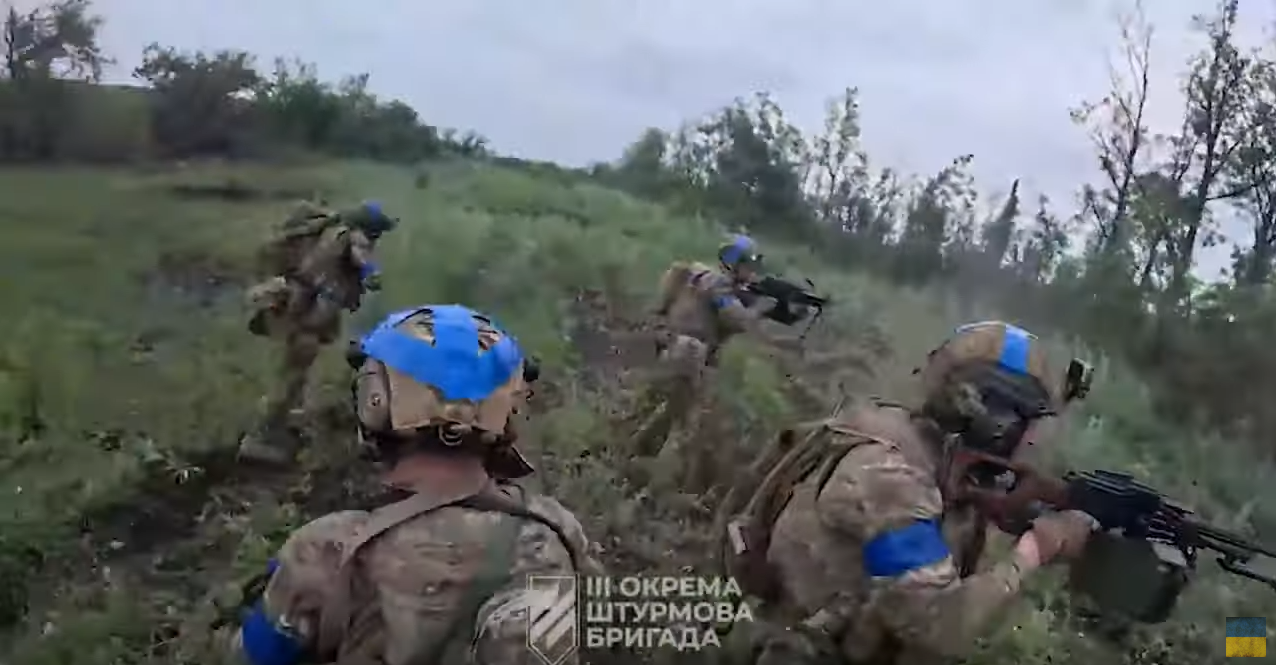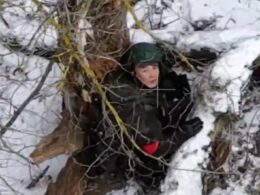Day 494: 2 July
Today there is a lot of news from the Orikhiv direction. After Ukrainians pushed Russians from the last line of fortification in from of Robotyne, the Ukrainians shifted their focus to the flanks. The main goal of the Ukrainians right now is to improve their tactical position around Robotyne before attempting to take it. As you can see, step by step, the Ukrainians have already managed to advance by almost 5 kilometers on a 16-kilometer-wide front line.
Nonetheless, globally speaking, advancing by 5 km does not give the Ukrainians a strategic advantage: the Ukrainians are still 20 kilometers away from Tokmak and 70 kilometers away from Melitopol. It has been one month since the beginning of the active stage of the counteroffensive operation, and this is not the result that most people expected to see, especially after the hyper-successful Kharkiv counteroffensive. But does this mean that the counteroffensive operation is failing? No.
First of all, the counteroffensive operation is still in the early stages because the Ukrainians still have not deployed their strategic reserves. Secondly, the Ukrainian command warned everyone in advance that this counteroffensive would not resemble the one in Kharkiv and would take significantly more time. The Kharkiv counteroffensive was so quick and successful because it was before the mobilization in Russia, so Russians lacked troops; the Ukrainians unexpectedly found a weak spot, penetrated one defense line, and collapsed the whole front.
This time the setting is completely the opposite: Russians have more troops, have prepared multiple lines of defense, and have expected the counteroffensive to happen in the South. That is why the first line of defense is overcrowded with troops and equipment. A Ukrainian soldier recently reported that there are around 60 pieces of heavy equipment only around Robotyne, which Ukrainian troops need to destroy to get closer. That is why the Ukrainians are using a completely different approach.
Recently, a prominent Russian source published a short interview with a Russian soldier who described exactly what Ukrainians are doing. He said that, right now, the main goal of the Ukrainians is not to penetrate the Russian defense but to drain all the accumulated ammunition, equipment, and reserves.
The Russian soldier reported that the Ukrainians were very carefully testing the ability of each Russian strong point to conduct defensive operations. The first thing the Ukrainians do is initiate a light engagement to force the Russians to use up their ammunition. By slowly increasing the intensity, the Russians are forced to unload their artillery.
Since a Russian multiple-launch rocket system does not have a truck with ammunition following it, after each salvo, the whole system has to drive to the warehouse to reload, which takes a lot of time. And once all artillery systems in the area make a salvo, the Russians lose the ability to conduct concentrated artillery strikes. This is precisely when the Ukrainians start intensifying their actions and sending additional two or three assault units.
At the same time, the Ukrainians are hunting down other types of artillery systems. Ukrainian reconnaissance drone operators work closely with artillery crews, including HIMARS crews, and identify and destroy up to four Russian artillery systems at a time. Due to the lack of artillery support, Russian strong points become much more vulnerable, which allows several Ukrainian infantry squads to approach the trenches and establish control over the positions.
The most effective way to undermine Russian well-prepared fortifications is to create a short-term deficit of ammunition and artillery support by forcing Russians to unload all of their equipment. The first wave of rebuff is the most powerful one because all weapons are obviously loaded and shoot virtually simultaneously. Once the concentration of fire decreases, the Ukrainians gain a window of opportunity. The first line of defense is the most difficult to breach because the Russians are well-prepared for Ukrainian attacks and have plenty of supplies. When the Ukrainians burn Russian reserves and Russian default defensive capabilities deteriorate, Ukrainian forces will finally be able to consider deep front-line penetrations.
In our daily frontline report, we pair up with the military blogger Reporting from Ukraine to keep you informed about what is happening on the battlefield in the Russo-Ukrainian war.
Related:
- Ukraine liberates about 40 km² over past week – Defense Ministry
- Frontline report: Ukrainian 47th Brigade breaches Russian defenses near Robotyne on southern front
- Frontline report: Small Ukrainian bridgehead in Kherson Oblast holds despite Russian attacks






